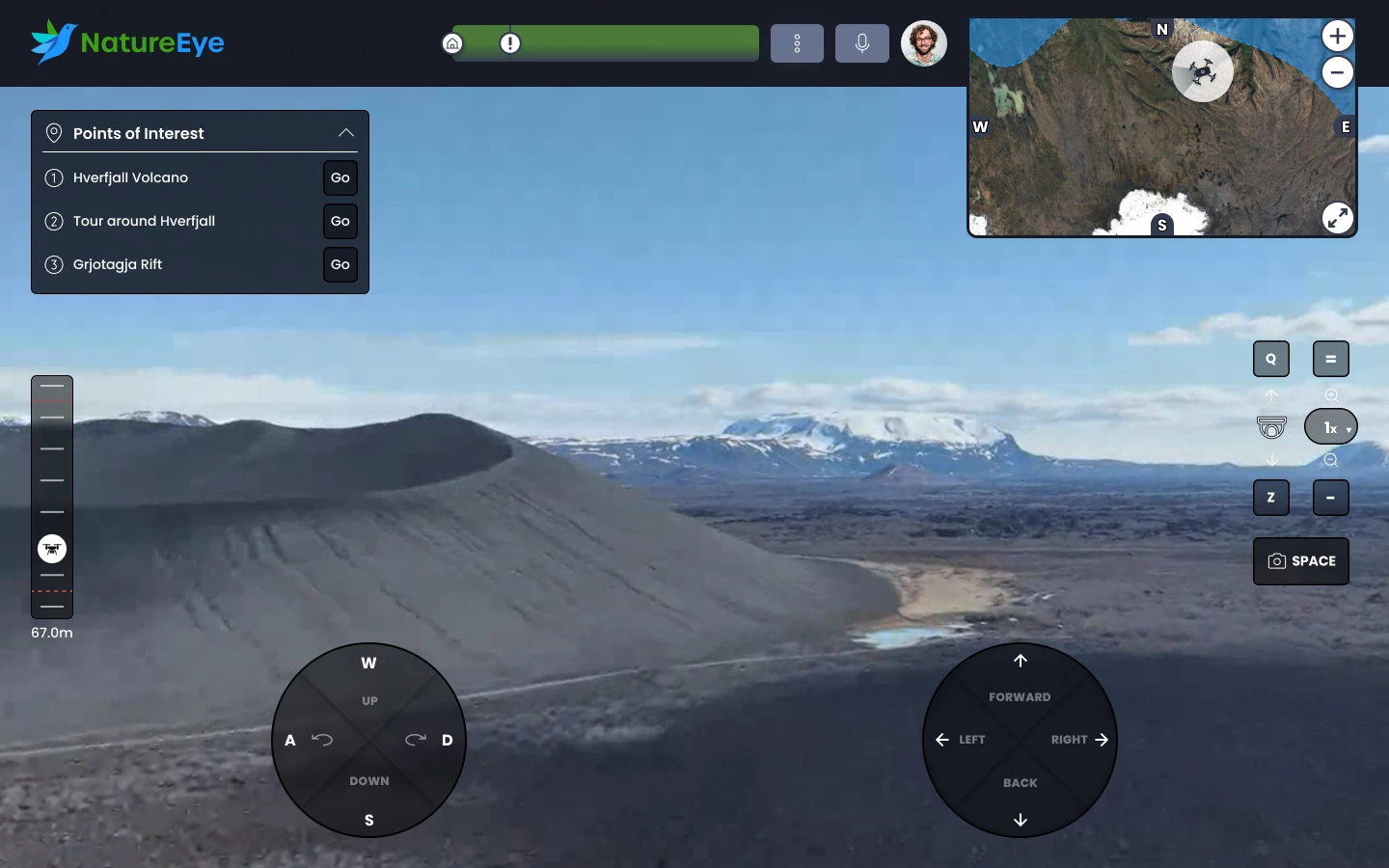Camera drones have made aerial photography way more accessible, but … what if there isn't much to look at where you live? That's where the NatureEye service comes in, as it allows you to remotely pilot a drone at conservation areas throughout the world.
You start by going to the NatureEye website and booking a 30-minute drone flight at the area of your choice. While more places are reportedly in the works, currently available locations include Chyulu Hills in Kenya, Elephant Sands in Botswana, Hverfjall Volcano in Iceland, Machu Picchu in Peru, the Mekong River in Cambodia, and Dungeness Spit in Washington state.
After completing a five- to 10-minute online flight training session, you go back to the website at the scheduled flight time. You then take control of a DJI Mavic 3 Enterprise or Mavic 2 Zoom quadcopter located at the conservation area, piloting it in real time via an interface on your computer or tablet screen.

Throughout the flight you're joined online by a local guide, who tells you about what you're looking at and suggests things to check out. That guide can even pilot the drone as you simply take in the view (although that doesn't sound like as much fun). Additionally, at any point during the aerial tour you can snap photos via the drone's HD camera, then download the pics after the flight.
Of course, when you mix drones and wildlife, there's always the possibility that the former will disturb the latter. NatureEye claims to have this covered, however.

NatureEye CMO Michelle Weil tells us that the drones' omnidirectional obstacle avoidance system should keep them from crashing into animals, trees or whatnot, plus the guide can override the user and take control at any time. The drones are also electronically limited to certain speeds, minimum/maximum altitudes, and geofenced areas, plus they take off and land autonomously. They're additionally equipped with special low-noise propellers, keeping the racket to a minimum.
NatureEye is open for flight bookings now, at US$95 a pop. Up to 50% of the revenue goes towards conservation efforts at the different areas. You can see drone footage from some of those places in the video below.
Source: NatureEye










